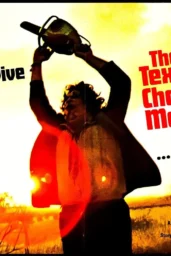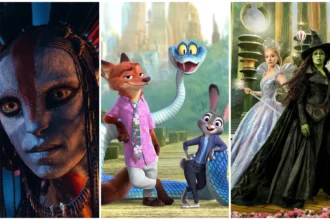Twenty-five years writing about this industry, and James Cameron still finds ways to surprise me. Not with another technological breakthrough—we've seen enough of those—but with a medium pivot that actually makes sense. The man who revolutionized underwater filming and pioneered performance capture now wants to take Avatar into animation. And his reference point? The Animatrix.
That's not a casual comparison. That's Cameron studying the playbook.
The Empire Magazine Revelation
In his recent Empire Magazine interview, Cameron revealed his pitch to Disney: “I said, ‘Look, I want to do an animated anthology series that's essentially in the world, but stories that you wouldn't have expected from that world'.” The project could deliver “backstory on characters and tangential stuff that happened off-camera within the movies,” expanding what Cameron calls the “texture and baroque detail” of Pandora.
Here's what separates this from typical franchise expansion: Cameron's not just throwing Avatar at every available medium. He's targeting specific narrative gaps. The ecological collapse of Earth. Na'vi history before Jake Sully crash-landed. Varang's transformation into the Fire and Ash antagonist. These aren't side stories—they're foundational mythology that the live-action films can't accommodate without derailing their central narratives.
The Matrix Blueprint
Cameron's Animatrix reference isn't fanboy nostalgia—it's strategic analysis. When the Wachowskis expanded The Matrix through animation in 2003, they didn't just create supplementary content. They delivered essential lore. “The Second Renaissance” explained humanity's fall to the machines. “World Record” explored the nature of reality itself. Each vignette used different animation styles to match its thematic needs.
The Animatrix proved that animated anthologies could handle heavy philosophical concepts while maintaining visual spectacle. More importantly, it showed that audiences would accept radical tonal shifts within established universes. Cameron's been watching that success for two decades.
The timing matters here. Disney+ has already demonstrated animated anthology potential with Star Wars: Visions. But that series treated animation as experimentation—stylistic departures from core canon. Cameron's approach sounds more integrative. These would be Avatar stories that enhance rather than reimagine.
Production Reality Check
Let's address the obvious constraint: Cameron's still got two live-action Avatar films in active production. Avatar: Fire and Ash hits theaters December 19, 2025, followed by Avatar 4 in 2029 and Avatar 5 in 2031. That's six years of primary franchise obligations.
But animation offers a different production pipeline. While Cameron fine-tunes underwater sequences and perfects Na'vi facial performance capture, his animation teams could be developing anthology scripts. The Pandoran world-building is already complete—environments, creature designs, cultural hierarchies. Animation wouldn't require starting from scratch.
The real question is control. Cameron doesn't delegate creative authority easily. An animated anthology would demand multiple directors, varied visual approaches, different storytelling rhythms. Can the man who spent thirteen years perfecting Avatar's sequel actually let other artists interpret his universe?
Why This Could Work
Here's what Cameron understands about modern franchise management: audience investment requires depth, not just spectacle. Marvel succeeded by building interconnected mythology. Star Wars expanded through multiple mediums. Avatar's live-action films provide the tentpole events, but animation could supply the connective tissue.
Consider the narrative opportunities. Jake Sully's military background. Grace Augustine's early research. The corporate politics behind RDA's Pandora mission. Hell's Gate construction and early colonial failures. These stories exist in Cameron's head—he's mentioned creating extensive backstories for every character. Animation gives him distribution channels for that material.
The medium also solves Avatar's representation challenges. Live-action requires extensive performance capture and environmental construction. Animation allows for more diverse Na'vi clan exploration, different Pandoran biomes, historical time periods. Cameron could show us the planet's pre-human ecosystem, the first RDA surveys, the early Na'vi response to sky people.
The Disney Factor
Cameron's working within Disney's ecosystem now, and that changes everything. Disney+ needs prestige content that justifies subscription costs. An Avatar animated anthology, executive produced by Cameron, becomes premium programming. Not children's television—adult-oriented science fiction that expands the highest-grossing film franchise in history.
Disney's animation capabilities have evolved significantly since traditional hand-drawn features. They've mastered photorealistic computer animation, stylized approaches, mixed-media experimentation. An Avatar anthology could showcase that technical range while maintaining Cameron's visual standards.
The streaming economics make sense too. Live-action Avatar films cost $350-400 million each. Animated features run $100-150 million. Anthology series episodes could be produced for television budgets while maintaining theatrical visual quality. That's sustainable franchise expansion.
What This Means for December
Avatar: Fire and Ash just dropped its first trailer, promising evil Na'vi and family conflict. But Cameron's animation discussion reframes that film's significance. Fire and Ash isn't just the next Avatar movie—it's the foundation for expanded universe storytelling.
Every new character introduced, every historical reference mentioned, every cultural detail explored becomes potential anthology material. Cameron's not just building toward Avatar 4 and 5. He's architecting a multimedia mythology that could sustain decades of content creation.
Will it happen? Cameron's track record suggests cautious optimism. The man who promised us underwater cities and delivered them, who spent years perfecting 3D technology that actually enhanced storytelling rather than gimmicky distraction. When James Cameron discusses expanding his universe, smart money pays attention.
Besides, we've seen this story before. And sometimes, we see it better when the director's vision isn't constrained by live-action limitations.













